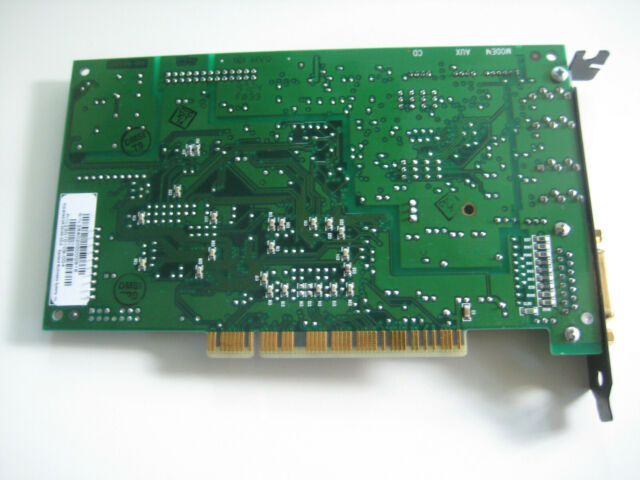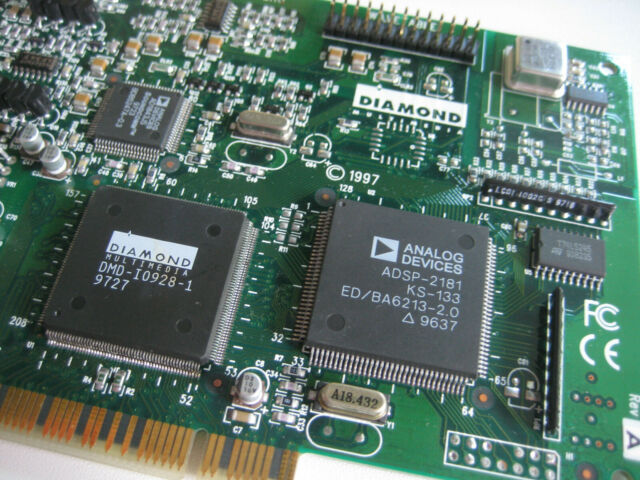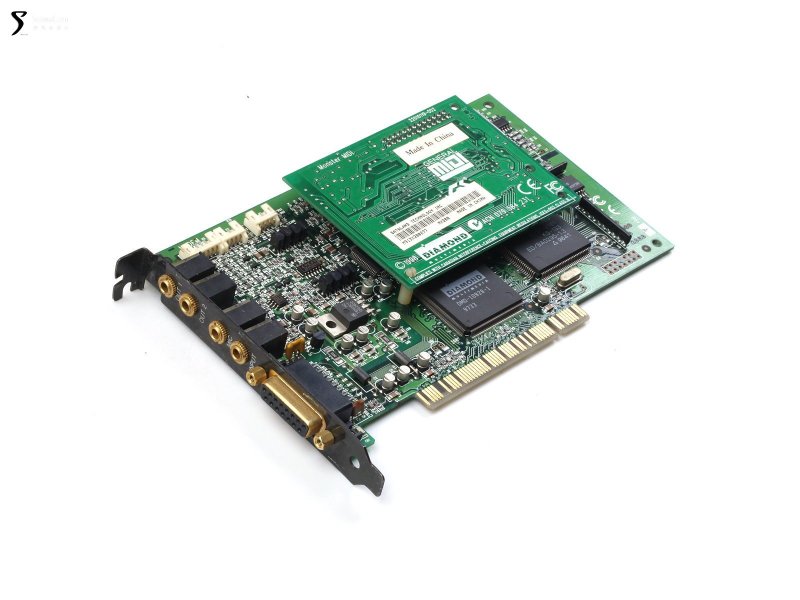Diamond Monster Sound MX200
The Monster Sound MX200 was released in 1998. It was their mid-range offering launched alongside the premium Monster Sound 3D and budget Sonic Impact.
 |
Released | July 1998 |
| Bus | PCI | |
| Chipset | Aureal Vortex | |
| Standards | Ad Lib, Sound Blaster, Sound Blaster Pro, General MIDI, Roland MPU-401, Windows Sound System | |
| Memory | None | |
| CD-ROM | None | |
| Ports | Line In, Line Out, Mic In, Speaker Out, Game/MIDI Port, Wavetable header | |
| Part # | ||
| FCC ID | ||
| Price | At launch: $149 | |
| See Also |
If you get a blue screen when running games with Aureal A3D support, check your Monster Sound utility. This error can occur when the hardware acceleration setting is set to 'Min' and the 'Use Preferred Devices' is set under Control Panel's Multimedia window.
The original Diamond Monster Sound (M100) was tested by PCAVTech. In their playback [digital-to-analogue] tests the Monster Sound got a Signal-to-Noise ratio of -73.9dB. This is considered very good. I don't have any info on the MX200's noise though.
Board Revisions
In the Media
Supporting sample rates up to 48kHz, the MX200 supports a true surround sound configuration courtesy of its 2 Buffered Stereo Line-Level Outputs at the sacrifice of a standard Line-out. In essence, the MX200 doesn't have any more outputs than your standard sound card however it is packaged with utilities that allow you to make the most of those two outputs. There is a standard Line-in port on the back panel of the sound card, with CD, Modem, and Auxiliary inputs on the actual card itself.
The MX200 processes all game port signals on the board which should decrease CPU utilization when making use of a gameport joystick. However if you're planning on picking up a USB Joystick or Gamepad then you shouldn't really be concerned with this feature of the MX200.
The weakness of all PCI Sound Cards seems to be Legacy support for older DOS games. While running a game in a DOS window the MX200 will be detected and function as if it were a Sound Blaster Pro, unfortunately, for older DOS games that won't run in a DOS box you're probably out of luck using just an MX200. This is where that Monster Cable from the packaging comes in handy. Using the heavily shielded and extremely thick monster cable (the name does it justice) you can connect the MX200 to your current sound card so you can still run your older DOS games.
If you appreciate high quality audio and love the feeling of being immersed in it (i.e. you are the type of person that likes to listen to their music a little louder than most, or likes to turn on every speaker in the house to watch the newest action flick on DVD) then the Diamond Monster Sound MX200 is probably the answer to most of your prayers. However, if you're the type of person that focuses on gameplay and doesn't really care about the sounds coming out of your speakers, or if you don't play too many (if any) titles that would benefit from a Sound Card with A3D support then the Monster Sound MX200 quickly turns into a luxury device that serves no purpose but to take up a precious PCI slot." Anandtech, June 1998
Setting it Up
Downloads
Operation Manual Get in touch if you can provide this missing item! |
Driver & Utility Disk Contains:
|
|
More Pictures


